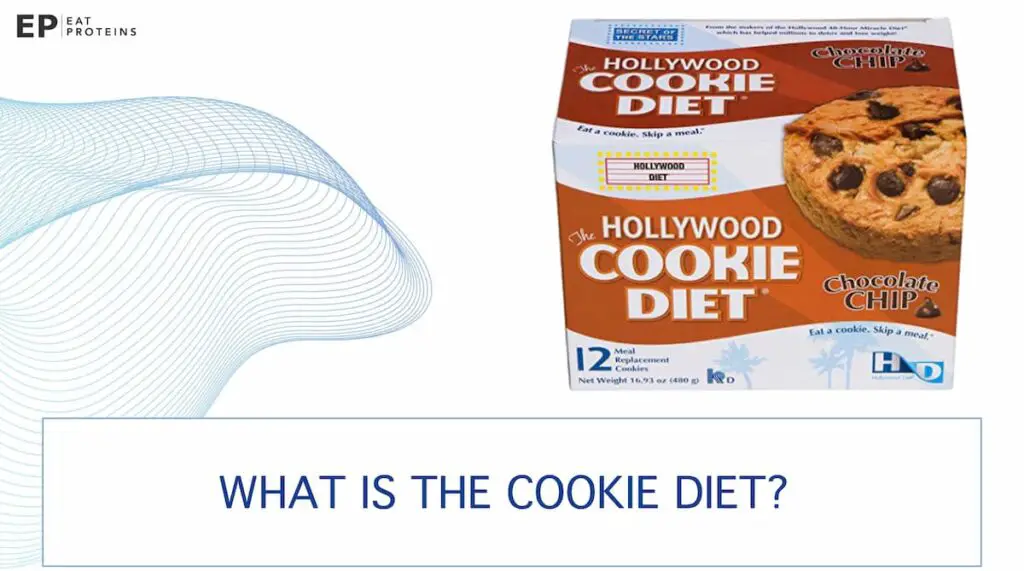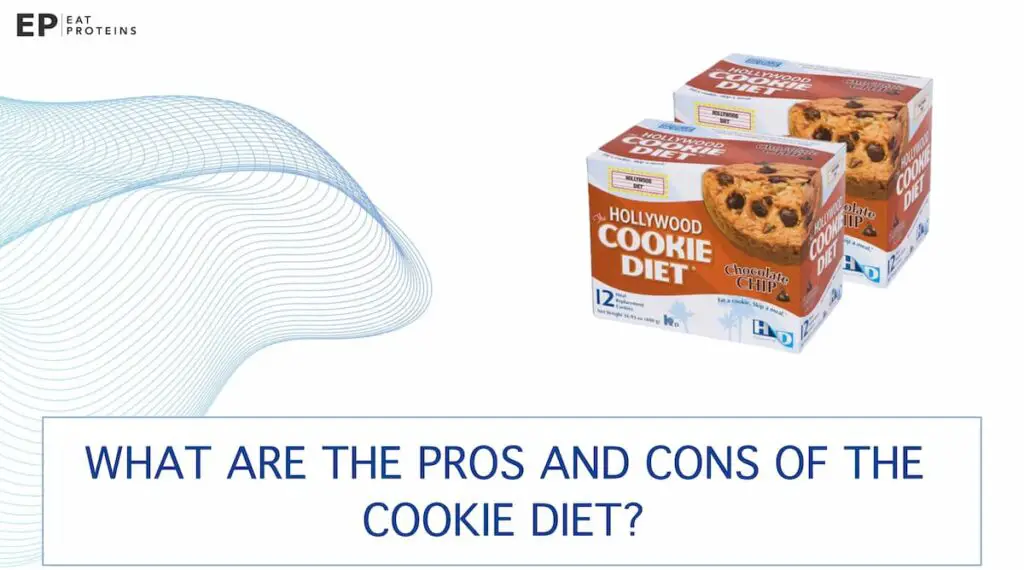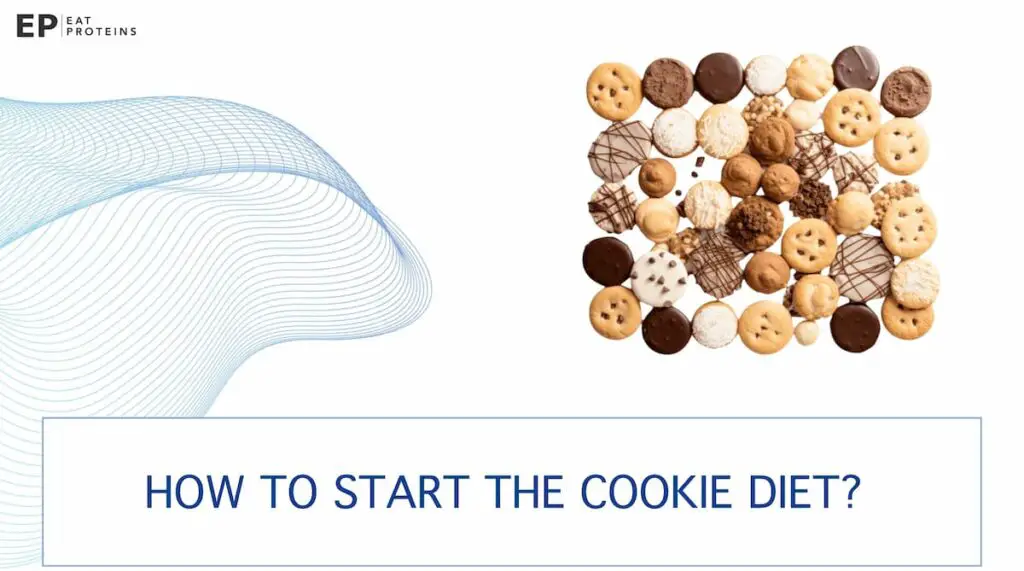The cookie diet refers to a weight loss program created by Dr. Sanford Siegal, where individuals consume specially formulated cookies as a low-calorie snack every two hours. These cookies help control hunger and cravings while providing a convenient and satisfying option for those looking to lose weight. The program recommends eating 1-2 cookies every 2 hours and a 500-700 calorie dinner meal, allowing individuals to achieve their weight loss goals.
The cookie diet offers a convenient and tasty way to control hunger and cravings, making it easier to stick to a weight loss plan. The cookies are low in calories, making them a satisfying snack that can be enjoyed throughout the day. Some customers may find limited flavor options, and it may not be suitable for those with dietary restrictions or allergies. Additionally, while the cookies can aid in weight loss, it is important to also focus on overall healthy eating habits and exercise for long-term success.
What is the Cookie Diet?
The Cookie Diet is a weight-loss plan created by Dr. Sanford Siegal, a physician who has treated over 500,000 overweight patients.

The diet involves eating nine specially formulated cookies (each containing 60 calories) throughout the day, along with one substantial 2092.0-2928.8 kJ meal. This adds up to a daily calorie intake of 1,000 to 1,200. The goal of the Cookie Diet is to help individuals reach and maintain a healthy weight and control their eating habits.
The Cookie Diet originated in 1975 when Dr. Sanford Siegal while researching natural foods that suppress hunger, decided to formulate a food that would do just that. He has been using this diet in his medical practice for over 40 years, successfully treating hundreds of thousands of patients. The purpose of the diet is to provide a structured eating plan that reduces hunger and promotes weight loss. The goal is to help individuals achieve a healthier weight and develop better eating habits.
Who developed the Cookie Diet?
The cookie diet was developed by Dr. Sanford Siegal, a South Florida physician, in 1975. This innovative approach to weight loss gained attention for its unique concept. At the time, Dr. Siegal’s cookie diet was a groundbreaking idea that aimed to provide a structured meal plan for those seeking to lose weight. While the diet has seen both benefits and risks, it all started with Dr. Sanford Siegal’s innovative approach to weight management.
What is the original concept behind the Cookie Diet?
The original concept behind the cookie diet is to provide a structured eating plan that includes nine specially formulated low-calorie cookies and one substantial meal per day.
How does the Cookie Diet work?
The Cookie Diet works by providing nine specially formulated low-calorie cookies to be eaten every two hours between wake-up and bedtime, along with one substantial 500-700 calorie home-cooked meal. The Cookie Diet has gained popularity due to its effectiveness, with numerous Hollywood stars, professional athletes, and media outlets endorsing it. This video explains how the cookie diet works.
What are the key ingredients in Dr. Siegel’s Cookie Diet?
The key ingredients in Dr. Siegel’s cookie diet include a proprietary protein blend, fiber, and various other nutritious components. The cookies are designed to provide a low-calorie snack option that helps control hunger and aid in weight loss. The cookies also incorporate flavors such as maple, cinnamon oatmeal, and butterscotch, adding to their appeal and taste.
- Protein (2 grams)
- Fat (2 grams)
- Carbohydrates (8 grams)
- Fiber (0.75 grams)
- Sodium (0.2 grams)
- Total Calories (60 per cookie)
What are the pros and cons of the Cookie Diet?
The Cookie Diet offers convenience and the potential for weight loss due to its calorie-restricted nature, but it may lack essential nutrients and may not be sustainable in the long term. Additionally, some individuals may experience side effects like hunger, fatigue, or mood swings.

Pros of the Cookie Diet
- The Cookie Diet offers convenience through pre-packaged cookies, simplifying meal planning and portion control.
- It provides a structured, low-calorie diet that can potentially lead to weight loss.
- The diet offers a variety of different flavors of cookies, making it more appealing to some users.
Cons of the Cookie Diet
- The diet may lack essential nutrients, leading to a potential nutritional imbalance.
- The sustainability of the diet is questionable, as it may be difficult to rely solely on cookies for an extended period.
- Some users may experience negative side effects like persistent hunger, fatigue, or mood swings due to the low-calorie nature of the diet.
What are the health benefits of the Cookie Diet?
The health benefits of the Cookie Diet are limited, as it is a highly restrictive and low-calorie diet. The only potential benefit is short-term weight loss, with claims of 11-17 pounds in one month. However, it is important to note that these claims are not supported by scientific studies.
What are the side effects of the Cookie Diet?
The 7 health risks of the Cookie Diet include the following.
- Nutrient deficiencies: The diet lacks essential nutrients, as it relies heavily on processed cookies and restricts calorie intake to 1,000-1,200 calories per day.
- Muscle loss: The low-calorie intake may lead to significant muscle loss, which can negatively impact overall health and metabolism.
- Unsustainable weight loss: The diet provides quick weight loss results, but it is highly restrictive and does not offer guidance for long-term dietary changes, making it difficult to maintain the weight loss.
- Lack of individualization: The Cookie Diet does not factor in individual nutritional needs, potentially leading to imbalances and deficiencies.
- Potential for rebound weight gain: Without proper guidance on weight maintenance, individuals may regain the weight lost once they stop relying on the cookies.
- Limited food choices: The diet primarily consists of prepackaged cookies, leaving little room for a variety of whole, nutrient-rich foods.
- Potential for disordered eating: The strict rules and focus on calorie restriction may contribute to an unhealthy relationship with food and the development of disordered eating patterns.
Is the Cookie Diet recommended for people with certain medical conditions?
No, the Cookie Diet is not recommended for people with certain medical conditions, as it is highly restrictive, lacks essential nutrients, and may not meet their specific dietary needs.
Is the Cookie Diet considered bad for your health?
Yes, the Cookie Diet is considered bad for your health due to its unnecessarily restrictive nature, reliance on processed foods, and lack of long-term guidance for maintaining weight loss without cookies.
How to Start the Cookie Diet?
To start the Cookie Diet, you would need to replace breakfast, lunch, and snacks with nine Dr. Siegal brand cookies each day, along with having a dinner consisting of lean meat or fish and vegetables. Here are eight instructions to help you get started:

- Purchase the Dr. Siegal brand cookies, which are the core component of the Cookie Diet.
- Plan your meals for the weight loss phase, making sure to include the recommended number of cookies and dinner with lean meat or fish and vegetables.
- Follow the eating plan, spacing out the cookies and meals throughout the day to keep your hunger satisfied.
- Take a multivitamin supplement as advised by the diet.
- Drink at least eight glasses of water per day to stay hydrated.
- Consider incorporating light exercise, such as a 30-minute walk, up to three times per week during the weight loss phase.
- Once you achieve your weight loss goal, transition to the weight maintenance phase, which includes an egg and vegetable omelet, berries, and cookies as snacks in between meals.
- Continue drinking eight glasses of water per day, and aim for three 30-40 minute sessions of moderate to advanced exercise each week during the maintenance phase.
What foods are allowed on the Cookie Diet?
The Cookie Diet allows for specific cookies from the Dr. Siegal brand as the main food source, along with a dinner consisting of lean meat or fish and vegetables.
- Dr. Siegal brand cookies
- Lean meat (such as chicken or turkey)
- Fish
- Vegetables
- Eggs
- Berries
- Multivitamin supplement
- Water
What foods are restricted on the Cookie Diet?
The Cookie Diet restricts the consumption of certain foods in order to promote weight loss.
- High-calorie meals
- Processed foods
- Sugary beverages
- Foods high in sugar and fat
- Gluten-containing foods
- Dairy products
What is the Six-Cookie Diet meal plan?
The Cookie Diet meal plan typically involves eating nine specially formulated cookies throughout the day to control hunger and reduce overall calorie intake. For dinner, you consume a meal that is high in lean protein and falls within a 500-700 calorie range, leading to a total daily intake of 1000-1200 calories.

Day 1
- Cookies: 9
- Dinner: Grilled chicken breast with steamed vegetables
Day 2
- Cookies: 9
- Dinner: Baked salmon with a side salad
Day 3
- Cookies: 9
- Dinner: Turkey stir-fry with bell peppers
Day 4
- Cookies: 9
- Dinner: Beef stew (lean meat) with carrots and potatoes
Day 5
- Cookies: 9
- Dinner: Shrimp and asparagus sautéed in olive oil
Day 6
- Cookies: 9
- Dinner: Chicken Caesar salad (use low-fat dressing)
Day 7
- Cookies: 9
- Dinner: Pork chops with steamed broccoli
What are the snack options on the Cookie Diet?
The snack options on the cookie diet typically include healthy choices to complement the diet’s cookie regimen. Snacks like fresh fruits, vegetables, low-fat or Greek yogurt, and a moderate amount of nuts and seeds are generally recommended.
- Apple slices
- Baby carrots
- Low-fat Greek yogurt
- A handful of almonds
- Celery sticks
- Cherry tomatoes
- A small portion of pumpkin seeds
What are the serving sizes for cookies on the Cookie Diet?
To maintain portion control on the cookie diet, you should consume a specific number of cookies per serving. The serving sizes for cookies on the cookie diet vary depending on the specific meal plan you are following. Here is a table outlining the serving sizes for different cookie diets:
| Cookie Diet | Serving Size |
|---|---|
| Smart for Life Cookie Diet | 6 cookies per day |
| Dr. Siegals Cookie Diet | 9 cookies per day |
| Hollywood Cookie Diet | 4 cookies per day |
| R&D Diet Cookie | 4-6 cookies per day |
What is the Hollywood Cookie Diet?
The Hollywood Cookie Diet involves replacing meals with specially formulated cookies, amounting to 500-700 calories per day. These cookies are designed to be low in calories and serve as meal replacements for weight loss. The program recommends consuming four of these cookies daily, along with a light, sensible dinner of approximately 800 calories. According to the diet’s claims, adhering to this regimen can result in a weight loss of around 15 pounds per month. However, the sustainability and nutritional adequacy of this diet are questionable, and it may not provide all the essential nutrients needed for long-term health.
What is the daily caloric intake on the Cookie Diet?
The daily caloric intake on the Cookie Diet is approximately 1,000-1,200 calories per day, consisting of nine cookies and a lean meat or fish and vegetable dinner.
What recipes are available for the Cookie Diet?
Recipes for the Cookie Diet primarily focus on creating cookies that are high in protein and fiber but low in calories, aiming to control hunger and reduce overall caloric intake.
- Dark Chocolate Almond Cookies: These cookies are packed with antioxidants from dark chocolate and healthy fats from almonds. They provide a rich and indulgent flavor while still being low in calories.
- Peanut Butter Banana Cookies: These cookies combine the creamy goodness of peanut butter with the natural sweetness of bananas. They are not only delicious but also a great source of protein and potassium.
- Oatmeal Raisin Cookies: A classic favorite, these cookies are made with whole-grain oats and raisins. They are a great source of fiber and provide a satisfying chewy texture.
Can you make your own cookies for the Cookie Diet?
No, the Cookie Diet recommends using Dr. Siegal brand cookies, so making your own cookies would not align with the diet plan.
How does the Cookie Diet work for weight loss?
The Cookie Diet works for weight loss by replacing breakfast, lunch, and snacks with specially formulated cookies. These cookies are low in calories and help create a calorie deficit, which can lead to weight loss. In addition to the cookies, dieters are allowed a healthy dinner consisting of lean meat or fish and vegetables. This combination of portion control and calorie restriction is believed to contribute to weight loss on the Cookie Diet.
How does the Cookie Diet affect blood sugar levels?
The cookie diet, which includes high-carbohydrate cookies, could potentially impact your blood sugar levels. Even though the cookies are designed to be low in calories, they contain carbohydrates that may raise blood sugar.
What are the scientific facts about the Cookie Diet?
The Cookie Diet is based on the principles of caloric deficit, meal replacement, and convenience, but it may also lead to potential muscle loss and nutritional deficiencies.
- Caloric Deficit: The Cookie Diet is designed to create a caloric deficit, essential for weight loss. By eating low-calorie cookies and a balanced dinner, you’re likely to consume fewer calories than you burn.
- Meal Replacement Effect: Studies have shown that meal replacement diets like the Cookie Diet can lead to more significant weight loss than traditional diets. This is due to the controlled portion sizes and predetermined caloric intake.
- Convenience and Cost-Effectiveness: One of the selling points of the Cookie Diet is its convenience and potential cost-effectiveness. Pre-packaged cookies eliminate the need for meal planning, and the overall cost may be lower than other diet plans.
- Potential Muscle Loss: Due to the low caloric intake, there’s a risk of losing muscle mass on the Cookie Diet. To counteract this, it’s recommended to include resistance training and ensure adequate protein intake.
- Nutritional Deficiencies: The Cookie Diet lacks essential nutrients, making it important to complement it with a balanced meal and possibly multivitamins to avoid nutritional deficiencies.
How does the Cookie Diet differ from the Meal Replacement Diet?
The Cookie Diet differs from the Meal Replacement Diet in that it specifically replaces breakfast, lunch, and snacks with cookies, while the Meal Replacement Diet can include a variety of meal replacement options. Additionally, the Cookie Diet is more restrictive in terms of calorie intake and relies heavily on prepackaged cookies, whereas the Meal Replacement Diet offers more flexibility with meal replacement choices and may include a wider range of nutrient-dense options.
How much does it cost to follow the Cookie Diet?
The price of the Cookie Diet varies depending on the duration and the type of package you choose. Take a look at the table below to get an idea of the different pricing options:
| Package | Price | Duration |
|---|---|---|
| 1-week supply | $79.95 | 7 days |
| 1-month supply | $199.95 | 30 days |
| 2-month supply | $199.95 | 30 days |
| 3-month variety pack | $349.95 | 60 days |
| 3-month supply | $479.95 | 90 days |
| 3-month variety pack | $479.95 | 90 days |
| 4-month supply/variety | $599.95 | 120 days |
Is the Cookie Diet just a fad diet?
Yes, the cookie diet can be considered a fad diet due to its focus on meal replacement with specially formulated cookies for weight loss. Critics argue that the diet is unbalanced and requires an excessively low-calorie intake of 800 calories per day.
Is the Cookie Diet considered a safe diet?
No, the Cookie Diet is not considered a safe diet due to its restrictive nature, reliance on processed foods, and potential nutrient deficiencies.
